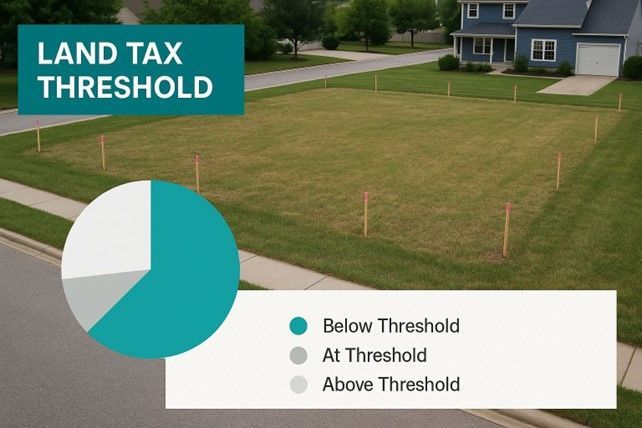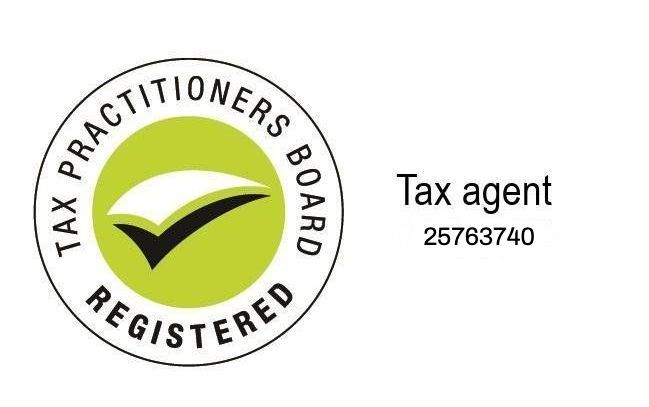Managing Cash Flow Problems in Small Business
Vania Wang • November 26, 2025
Managing Cash Flow Problems in Small Business

For many small business owners, cash flow is one of the most common and stressful challenges. Even when sales are strong and the business looks profitable on paper, cash shortages can quickly cause strain making it harder to:
- Pay suppliers
- Meet tax obligations
- Plan for growth
Understanding why cash flow problems happen and how to manage them is key to keeping your business steady, compliant and confident.
What Is Cash Flow and Why It Matters
Cash flow simply refers to the movement of money in and out of your business.
Cash inflows
are the funds coming in. From sales, services or other income.
Cash outflows
are the payments going out. For expenses, wages, suppliers, tax or loan repayments.
When your inflows exceed your outflows, you have positive cash flow. When the opposite happens, even temporarily, you can face serious pressure on your day-to-day operations. Good cash flow management ensures your business has enough funds available to meet obligations as they fall due. It’s not just an accounting issue, it’s about financial health, resilience and peace of mind.
Common Causes of Cash Flow Problems
Cash flow issues often have simple roots, but they can quickly spiral if not addressed early. Some of the most common causes include:
Slow Payments from Customers
Late or inconsistent customer payments are one of the biggest drivers of cash flow pressure. Even profitable businesses can find themselves short if money owed isn’t coming in on time.
Overcommitting to Expenses
When cash is flowing freely, it’s easy to take on extra costs like staff, subscriptions or equipment, without factoring in future dips or seasonal slowdowns.
Poor Visibility or Planning
Without regular forecasting or cash flow reporting, it’s hard to anticipate upcoming gaps. Many small businesses don’t realise there’s a problem until the bank balance starts to tighten.
Rapid Growth
It sounds counterintuitive, but fast growth can also cause cash flow strain. More customers often means more inventory, staff or upfront costs long before the payments arrive.
Tax and BAS Obligations
Tax obligations can easily catch businesses off guard. If GST, PAYG or super aren’t set aside progressively, quarterly or annual payments can feel overwhelming.
Early Warning Signs of a Cash Flow Issue
Catching cash flow issues early is the best way to prevent them from becoming crises. Some signs to look for include:
- Constantly juggling bills or delaying supplier payments
- Dipping into personal funds to cover business expenses
- Struggling to pay wages or super on time
- Relying heavily on overdrafts or short-term loans
- No clear visibility of upcoming expenses or liabilities
If these sound familiar, you’re not alone. They’re all signs it’s time to take a closer look at your numbers.
Practical Ways to Improve Cash Flow
While every business is different, a few consistent habits can make a big difference to cash flow stability.
Review Your Invoicing Process
Send invoices promptly, include clear payment terms, and follow up on overdue accounts early. Automating reminders through your accounting software can save time and improve collections.
Build a Cash Flow Forecast
A 3–6 month cash flow forecast helps you anticipate tight periods before they happen. Even a simple spreadsheet tracking expected inflows and outflows can provide clarity and confidence.
Keep a Tax Reserve Account
Regularly set aside funds for GST, PAYG, and superannuation. Having a separate bank account for tax ensures these obligations don’t compete with operating cash.
Manage Stock and Expenses Carefully
Holding too much inventory or committing to unnecessary overheads ties up valuable cash. Regularly review stock levels, subscriptions and supplier arrangements.
Consider Payment Plans or Terms
Negotiate with suppliers for longer payment terms, or with clients for deposits or progress payments, so cash timing aligns better with your workflow.
Review Your Pricing and Margins
If costs have increased but prices haven’t, your cash flow will feel it first. A quiet review of pricing and profitability can reveal where adjustments are needed.
Monitor and Review Regularly
Cash flow isn’t set-and-forget. Set aside time each month to review your reports, understand variances and make small adjustments before issues escalate.
How an Accountant Can Help
Cash flow problems often highlight deeper structural or timing issues that can be solved with the right systems in place.
An experienced accountant can help by:
- Creating and interpreting detailed cash flow forecasts
- Analysing your profit and loss and balance sheet to find bottlenecks
- Helping you manage GST, PAYG and superannuation obligations
- Providing regular reporting so you always know where your cash stands
- Offering guidance on sustainable payment and invoicing processes
At THN & Samios Partners, we focus on giving business owners the clarity they need to make informed, confident decisions. Not just at tax time, but all year round. As you close out the year, it’s a good time to:
- Review your debtors list and follow up overdue invoices
- Reassess upcoming tax and BAS obligations
- Review payment terms with key suppliers and customers
- Plan your January cash needs before the holiday slowdown
A little preparation now can prevent unnecessary stress when business activity picks up again in the new year.
Cash flow pressures are part of running a small business, but they don’t have to define it. With good systems, clear reporting and timely advice, you can stay ahead of issues and make confident, informed decisions about your next steps.
If you’re finding cash flow unpredictable or tight, our team at THN & Samios Partners can help you review your numbers, strengthen your processes and plan for smoother, more sustainable cash flow in the year ahead.
Disclaimer: The information provided on this website is for general informational purposes only. Hamilton Brown Partners assumes no responsibility for errors or omissions in the content or for any actions taken based on the information provided. Always speak to us or another registered professional before acting on any information read on this website.

What Is the Absentee Owner Surcharge? The absentee owner surcharge is a state-level tax applied to land owned by individuals, corporations, or trusts classified as 'absentee'. It ensures that owners living abroad contribute to the state services—like roads, emergency services, and public amenities—that help maintain and increase the value of their property. This surcharge is not a federal tax. The rules, rates, and exemptions differ significantly between states like Victoria, New South Wales, and Queensland. The primary goal is to ensure overseas investors contribute fairly to the funding of state infrastructure that underpins their property's value. It also aims to encourage the active use of local land. For any international investor, Australian expat, or trustee holding Australian property, determining your liability is crucial. Whether you must pay the surcharge depends on several factors: Your residency status, including the amount of time you spend in Australia. The ownership structure (individual, company, or trust). The state in which your property is located. Essentially, it's a financial acknowledgement of your investment in a community you are not physically part of for most of the year. The 'Why' Behind Victoria's Absentee Owner Surcharge

Your Guide To The Land Tax Threshold For anyone holding investment properties, understanding the land tax threshold is critical for managing your annual costs. It acts as a starting line; you don't begin to incur tax until your portfolio's total land value crosses that state-specific point. This state-based tax is calculated solely on the unimproved value of your land. This is a crucial detail. It means the state revenue office disregards the value of any buildings, landscaping, or other structures on the property. It’s the land itself, not the dwelling on it, that is taxed. This is why a modest house on a large, valuable block in a sought-after suburb could attract a much higher land tax bill than a brand-new luxury apartment that occupies a very small land footprint. The visual below illustrates this point, showing how the assessment focuses on the land's value alone. This concept is the foundation for how the land tax threshold is applied to your portfolio. It’s all about the value of the underlying land. Why Does This Tax Exist? At its core, land tax is a significant source of revenue for state and territory governments. It helps fund essential public services that benefit the entire community, such as schools, hospitals, roads, and emergency services. The system is specifically designed to apply to those who own land as an investment, which is why your principal place of residence is almost always exempt. The land tax framework is built on a few key principles: Progressive Taxation: The more valuable your total land holdings are, the higher the rate of tax you will pay. State-Based System: This is a critical point. Each state and territory sets its own rules, rates, and land tax threshold. There is no single national system. Aggregation: All the taxable land you own within a single state is added together to determine if you’ve crossed the threshold for that jurisdiction. Because it's a state-based system, an investor with properties in both New South Wales and Victoria is assessed separately in each state. This means they can benefit from two different tax-free thresholds. Effective tax planning is essential for investors, just as it is for small business owners who need to stay current with the latest ATO tips for small business . How Land tax Thresholds Differ Across Australia If you own investment properties across Australia, you cannot view land tax as a single, national rule. Land tax is a state-based system, meaning every state and territory operates under its own distinct set of regulations. This is a critical point for any investor to grasp. A property portfolio with a specific land value in New South Wales could face a completely different tax bill compared to an identical portfolio in Queensland. The differences are not minor. Each state sets its own land tax threshold —the value your unimproved land must reach before the tax applies. Additionally, they set their own tax rates, which typically increase as your land value grows.










